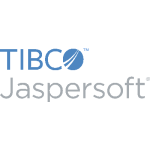About Vertica Analytics Platform
Extract, transform, and load data to Vertica. Ingest data from Vertica and load to other destinations.
About Jaspersoft
As a business intelligence solution, Jaspersoft empowers developers to integrate 'pixel-perfect' data visualizations and presentations within their applications. Because of its customization features, Jaspersoft is a developer-friendly reporting and analytics platform that simplifies the process of getting the answers you want within your preferred applications. The platform is scalable both economically and architecturally for the widest reach possible.
Popular Use Cases
Bring all your Jaspersoft data to Amazon Redshift
Load your Jaspersoft data to Google BigQuery
ETL all your Jaspersoft data to Snowflake
Move your Jaspersoft data to MySQL
Vertica Analytics Platform's End Points
Vertica Massively Parallel Processing (MPP)
Through its MPP architecture, Vertica distributes requests across different nodes. This brings the benefit of virtually unlimited linear scalability.
Vertica Column-Oriented Storage
Veritica's column-oriented storage architecture provides faster query performance when managing access to sequential records. This advantage also has the adverse effect of slowing down normal transactional queries like updates, deletes, and single record retrieval.
Vertica Workload Management Automation
With its workload management features, Vertica allows you to automate server recovery, data replication, storage optimization, and query performance tuning.
Vertica Machine Learning Capabilities
Vertica includes a number of machine learning features in-database. These include 'categorization, fitting, and prediction,' which bypasses down-sampling and data movement for faster processing speed. There are also algorithms for logistic regression, linear regression, Naive Bayes classification, k-means clustering, vector machine regression/classification, random forest decision trees, and more.
Vertica In-Built Analytics Features
Through its SQL-based interface, Vertica provides developers with a number of in-built data analytics features such as event-based windowing/sessionization, time-series gap filling, event series joins, pattern matching, geospatial analysis, and statistical computation.
Vertica SQL-Based Interface
Vertica's SQL based interface makes the platform easy to use for the widest range of developers.
Vertica Shared-Nothing Architecture
Vertica's shared-nothing architecture is a strategy that lowers system contention among shared resources. This offers the benefit of slowly lowering system performance when there is a hardware failure.
Vertica High Compression Features
Vertica batches updates to the main store. It also saves columns of homogenous data types in the same place. This helps Vertica achieve high compression for greater processing speeds.
Vertica Kafka and Spark Integrations
Vertica features native integrations for a variety of large-volume data tools. For example, Vertica includes a native integration for Apache Spark, which is a general-purpose distributed data processing engine. It also includes an integration for Apache Kafka, which is a messaging system for large-volume stream processing, metrics collection/monitoring, website activity tracking, log aggregation, data ingestion, and real-time analytics.
Vertica Cloud Platform Compatibility
Vertica runs on a variety of cloud-based platforms including Google Cloud Platform, Microsoft Azure, Amazon Elastic Compute Cloud, and on-premises. It can also run natively using Hadoop Nodes.
Vertica Programming Interface Compatibility
Vertica is compatible with the most popular programming interfaces such as OLEDB, ADO.NET, ODBC, and JDBC.
Vertica Third-Party Tool Compatibility
A large number of data visualization, business intelligence, and ETL (extract, transform, load) tools offer integrations for Vertica Analytics Platform. For example, Integrate.io's ETL-as-a-service tool offers a native integration to connect with Vertica.
Jaspersoft's End Points
Jaspersoft Reporting
Jaspersoft's reporting features compile data from multiple sources to present it with beautiful, accessible visuals. The platform allows you to design 'pixel-perfect,' interactive reports that you can print, display on the web, or access from any mobile device.
Jaspersoft Analytics
Jaspersoft's data analysis tools offer advanced visualizations, modeling, and manipulation features that empower you to identify problems and find trends. Analyze and explore any kind of data with either in-memory or OLAP analysis for better, faster decision-making.
Jaspersoft Dashboards
Jaspersoft's dashboarding features support multi-report dashboards that incorporate internal and external information. The dashboard tools synthesize data and graphics to provide easy-to-understand, up-to-date information summaries.
Jaspersoft Data Integration
Jaspersoft's advanced ETL (extract, transform, load) features pull data from multiple sources into your data warehouses and/or data marts for analytics purposes. Aided by connectivity to ERP and CRM platforms like SugarCRM, SAP, and Salesforce, Jaspersoft also includes support for transactional databases, analytical databases, mainframe databases, and big data solutions like Hive. Jaspersoft leverages all of your data sources, both relational and non-relational, for deep insights and reporting.
Jaspersoft Visualize.js
Visualize.js gives you maximum control and scalability when embedding visualizations and reports into your applications. For this reason, Jaspersoft claims to be 'the only embedded BI tool that works the way developers think.'
Jaspersoft Security and Compliance
Jaspersoft's security and compliance features allow you to define who has access to analyses and reports at the row and cell level for maximum security and compliance. It also includes auditing and monitoring services for detailed performance and compliance-related metrics. Moreover, Jaspersoft is compatible with third-party ID management services through its SSO (single sign-on) support with a customizable API.













